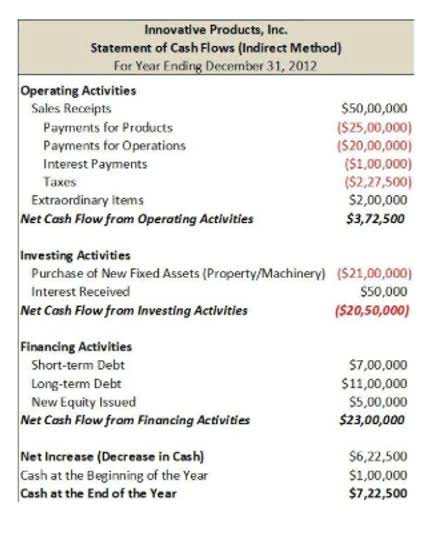Absorption Costing Explained, With Pros and Cons and Example

The businesses can realise their fixed costs beforehand and correctly price the product for sale. It’s worth noting that absorption costing finds parallels in other accounting approaches. For example, job costing is employed for tracking broader project expenses, while construction job costing is specific to construction projects. Process costing, on the other hand, is suitable for absorption costing formula industries producing homogeneous products en masse, like gasoline or cement manufacturers.
Boosting current net income
Absorption costing fails to provide as good an analysis of cost and volume as variable costing. If fixed costs are a substantial part of total production costs, it is difficult to determine variations in costs that occur at different production levels. This makes it more difficult for management to make the best decisions for operational efficiency. Absorption of costs refers to the incorporation of all manufacturing costs—both fixed and variable—into the product’s total cost. Essentially, the product’s Mental Health Billing cost becomes a comprehensive reflection of all incurred expenses.
Types of Companies in Managerial Accounting

Having this full cost per unit can help businesses set long-term sales prices and evaluate the overall profitability of different product lines. When the factory produces more units, these costs tend to increase, and when production slows down, they generally decrease. They indirectly support the manufacturing process rather than becoming part of the product. Remember to factor in related payroll taxes and allocated fringe benefits for production workers.

Streamline Your Financial Operations with an All-in-One Financial Management Solution
- We’ll also compare it with variable costing to highlight key differences.
- You can calculate a cost per unit by taking thetotal product costs / total units PRODUCED.
- Let us understand the concept of absorption costing equation with the help of some suitable examples.
- We will use the UNITS SOLDon the income statement (and not units produced) to determinesales, cost of goods sold and any other variable period costs.
- Below are some key benefits that make this method valuable for financial reporting and decision-making.
- The reporting tools within the Enterprise Suite are flexible, letting you organize information in detail.
Finally, to find the COGS, multiply the absorption cost per unit by the number of motors sold during the month. We’ll use a fictional motor company, «Precision Motors Ltd.,» for the month of July. These costs represent the essential infrastructure, equipment, and core personnel required to keep the factory operational, regardless of the specific number of units produced day-to-day.
By capitalizing fixed costs within inventory, absorption costing ensures that unsold products retain a portion of these expenses on the balance sheet, rather than being immediately expensed in the income statement. When production volume increases, absorption costing can lead to a rise in net income. This is because the higher production volume allows fixed costs to be distributed over more units, lowering the unit production cost. This reduced unit cost will manifest as a lower cost of goods sold (COGS) on the income statement, thus boosting net income. These are not recognized as expenses in the current period when they’re incurred.

The product costs (or cost of goods sold) would include direct materials, direct labor and overhead. The period costs would include selling, general and administrative costs. This method includes direct materials, direct labor, variable manufacturing overhead, and fixed manufacturing overhead costs. By including both fixed and variable overhead costs, absorption costing gives a complete picture of the total expenses incurred during production, allowing businesses to determine accurate product pricing.
- These include expenses like rent for the manufacturing facility, depreciation on machinery, and salaries of supervisors.
- In order to complete this statement correctly, make sure you understand product and period costs.
- As you can see there is a heavy focus on financial modeling, finance, Excel, business valuation, budgeting/forecasting, PowerPoint presentations, accounting and business strategy.
- Absorption costing can be less accurate than variable costing when production volumes fluctuate, as it spreads fixed costs across all units, which may not always reflect the true cost of producing additional units.
- Do not forget to download the Excel working file at the end of the article.
- Remember to factor in related payroll taxes and allocated fringe benefits for production workers.

(2) The rationale behind this method is that both material and labour costs cause the overhead contra asset account to be incurred and therefore it is appropriate to use the aggregate of both as basis for absorption. Under this method the overhead is divided by the aggregate of direct material and direct labour cost of the department. To support our conclusion and facilitate the decision-making process of the management, we can present the following summary to showcase the effect on the income statement of the company.
Allocate costs by type
If you’re looking for tools to simplify these processes and gain better control over your product costing, consider exploring the Intuit Enterprise Suite. Once you have the costs, you need to see the results in your financial reports according to absorption costing rules. This means seeing inventory valued correctly—including that allocated fixed overhead—and understanding your true COGS. Now that we’ve identified the key manufacturing costs involved, let’s put them together. The absorption costing formula calculates the cost assigned to each unit produced. Fixed manufacturing overhead costs remain constant regardless of the level of production.


